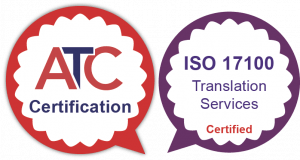Continuing from our previous post, here are some more hints and tips to help you with your voice recording projects.
- Determine your voice:
- Decide the feeling you want to convey (happiness, professionalism, etc.) and the market you want to reach in order to choose the right tone/register. For example, in the USA enthusiasm and hyperbole might be standard while a more instructional tone is to be used if you are addressing to a German audience.
- Consider whether to use masculine or feminine voice, bearing in mind that in some languages there are words that are not normally spoken by a woman and vice versa.
- Consider the relationship between the speaker and the audience.
- Think what is appropriate for your audience: child, young, adult, or mature voice
- Produce a recording/translation guide:
- Establish what is for translation and what is not. Clarify whether acronyms, proper nouns, product and/or company names should be translated/pronounced in English or in the target language.
- Positioning:
- Synchronise the voice with a move on the screen or the specific picture of a person mentioned in the narration.
- Synchronise the voice with bullet points e.g. in training material.
Please see the dedicated voice-over and subtitling page on the Comms Multilingual web site for more details; it also contains the information that we will need from you in order to provide a quotation for these services.
